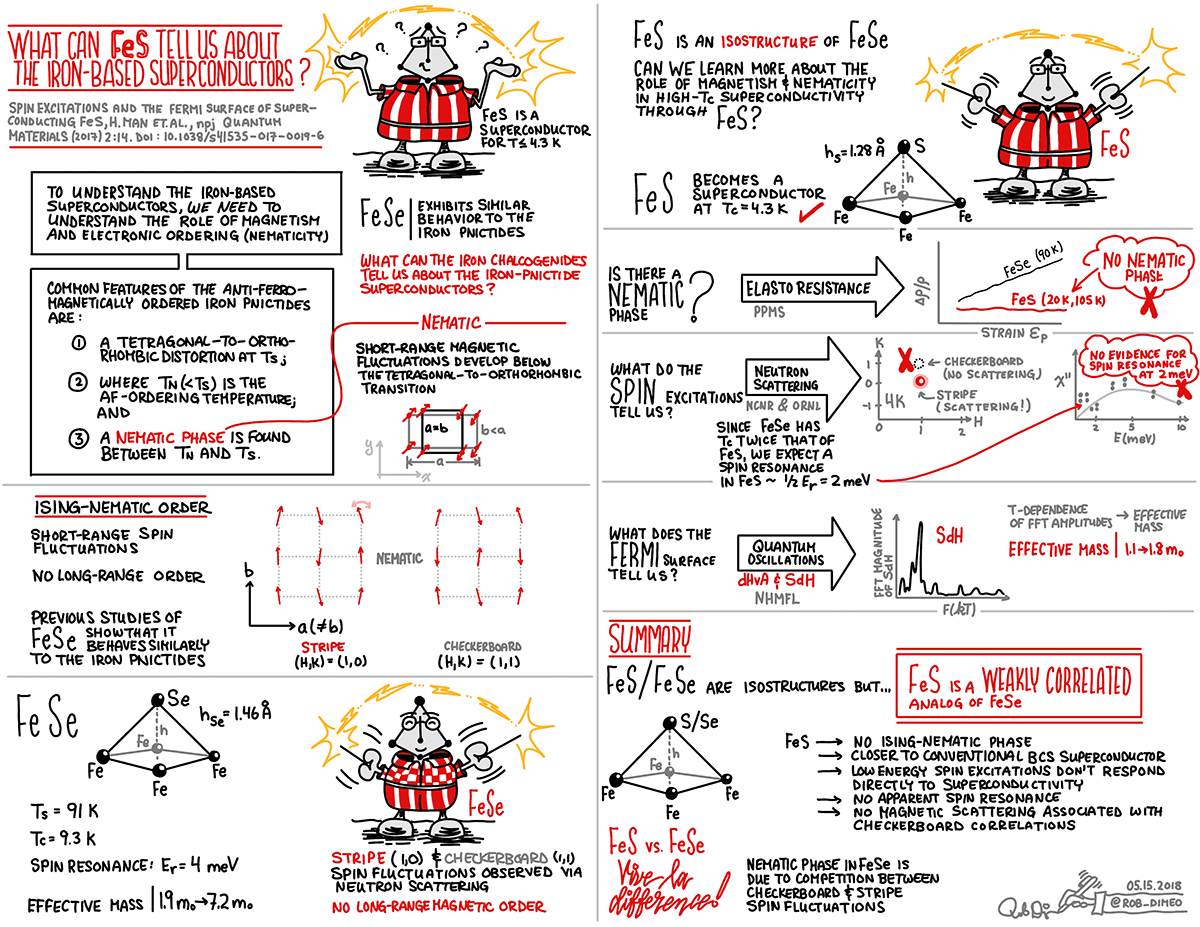Sometimes you need two tools to get the job done. Your doctor might need X-rays and an MRI to figure out what ails you. A woodworker might first use a band saw, then a radial saw.
So, too, in science. Researchers often rely on a combo of instruments to attack a complex question. Here, we explain how researchers paired high magnetic fields (at the National MagLab) with neutron scattering (at the National Institute of Standards and Technology, or NIST, and Oak Ridge National Laboratory) to learn more about superconducting compounds made from iron.
Got a Ph.D. in physics? Scroll down and dive right into an awesome infographic by NIST physicist Rob Dimeo that explains the research ("Spin excitations and the Fermi surface of superconducting FeS"). But if we lost you at "spin excitations," the synopsis below will prep you for the nerdier take that follows.
- Scientists are interested in superconductors, which conduct current with perfect efficiency. Most work only at really cold temperatures.
- But some work in relatively warmer environments (high-temperature superconductors, or HTS). Physicists are looking for one that superconducts at room temperature, a discovery that would be revolutionary.
- So they are trying to understand at the atomic level how superconductivity works. Scientists believe different superconductors work in different ways.
- Iron-based superconductors such as iron selenide (FeSe) intrigue physicists for lots of reasons:
- At super-low temperatures or high pressures, FeSe enters a phase called "nematic ordering," when the spins of electrons tend to order in an "up/down, up/down" pattern. This behavior seems to be connected with FeSe's transition to a superconductor.
- FeSe has properties conducive to superconductivity. Scientists deduced this by using high magnetic fields to draw its "Fermi surface," a kind of energy map that shows how electrons can move through it.
- By bombarding FeSe with neutrons, scientists observed magnetic fluctuations of energy (those "spin excitations") that they believe might be the "glue" that helps the electrons superconduct.
- To better understand FeSe, these scientists examined iron sulfide (FeS); both compounds superconduct and share a similar structure. They discovered that, unlike FeSe …
- FeS showed no nematic ordering.
- FeS exhibited different magnetic fluctuations of energy in neutron experiments.
- And its Fermi surface looks a lot different: Its electrons don't influence one another much (i.e., they're "weakly correlated"), in contrast to FeSe.
- So FeSe is weird — in a good way. Its electrons are strongly correlated, like cars in a traffic jam: For one to move, they all need to all move. The electrons' "effective mass" is relatively heavy because they all interact with each other, a behavior that has "HTS" written all over it.
- But FeS is boring: It's weakly correlated, has a relatively light effective mass and, although it does superconduct, it does so in a banal way (not HTS!).
View larger image

Story by Kristen Coyne. Illustration above by Rob Dimeo.